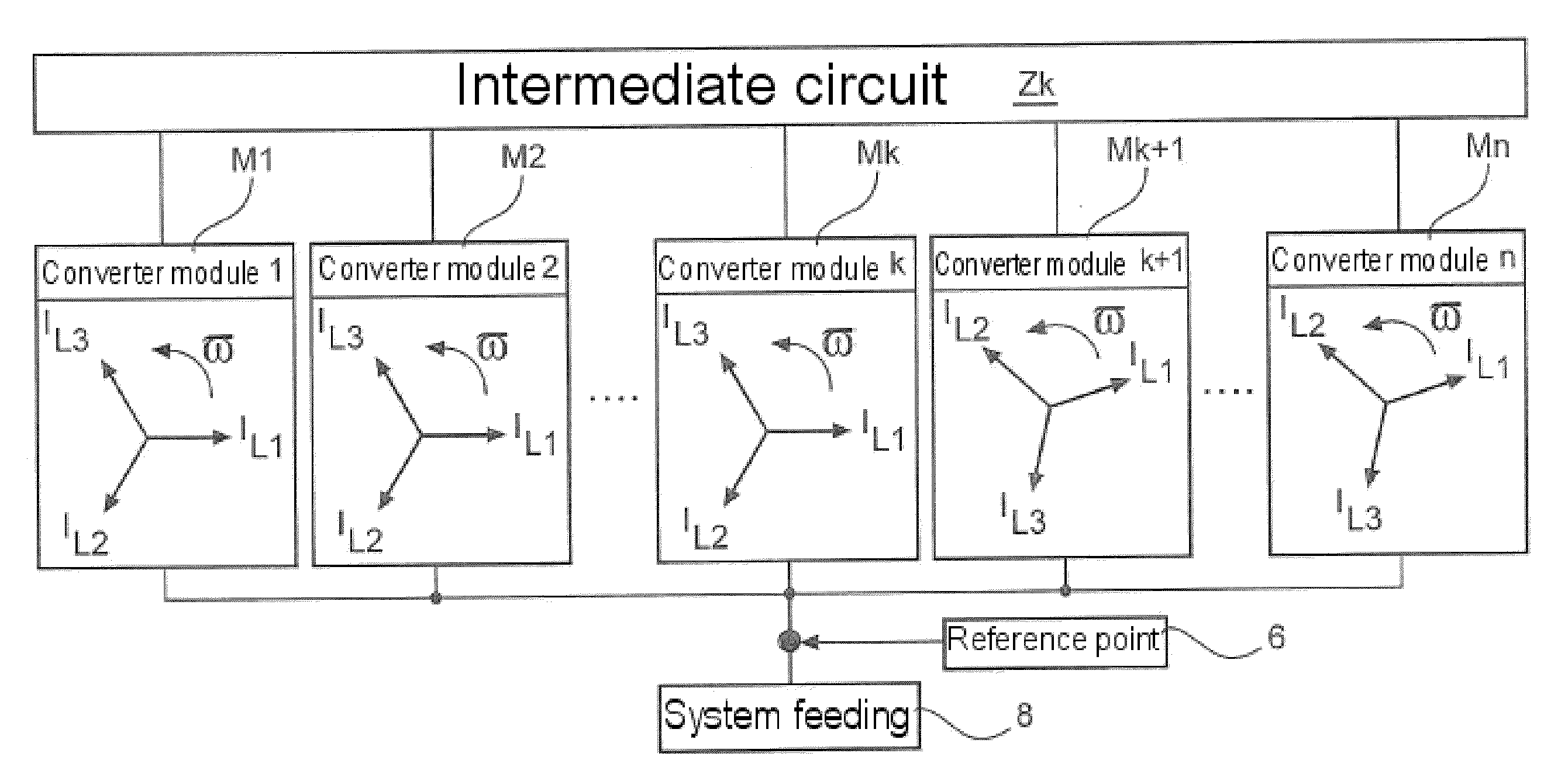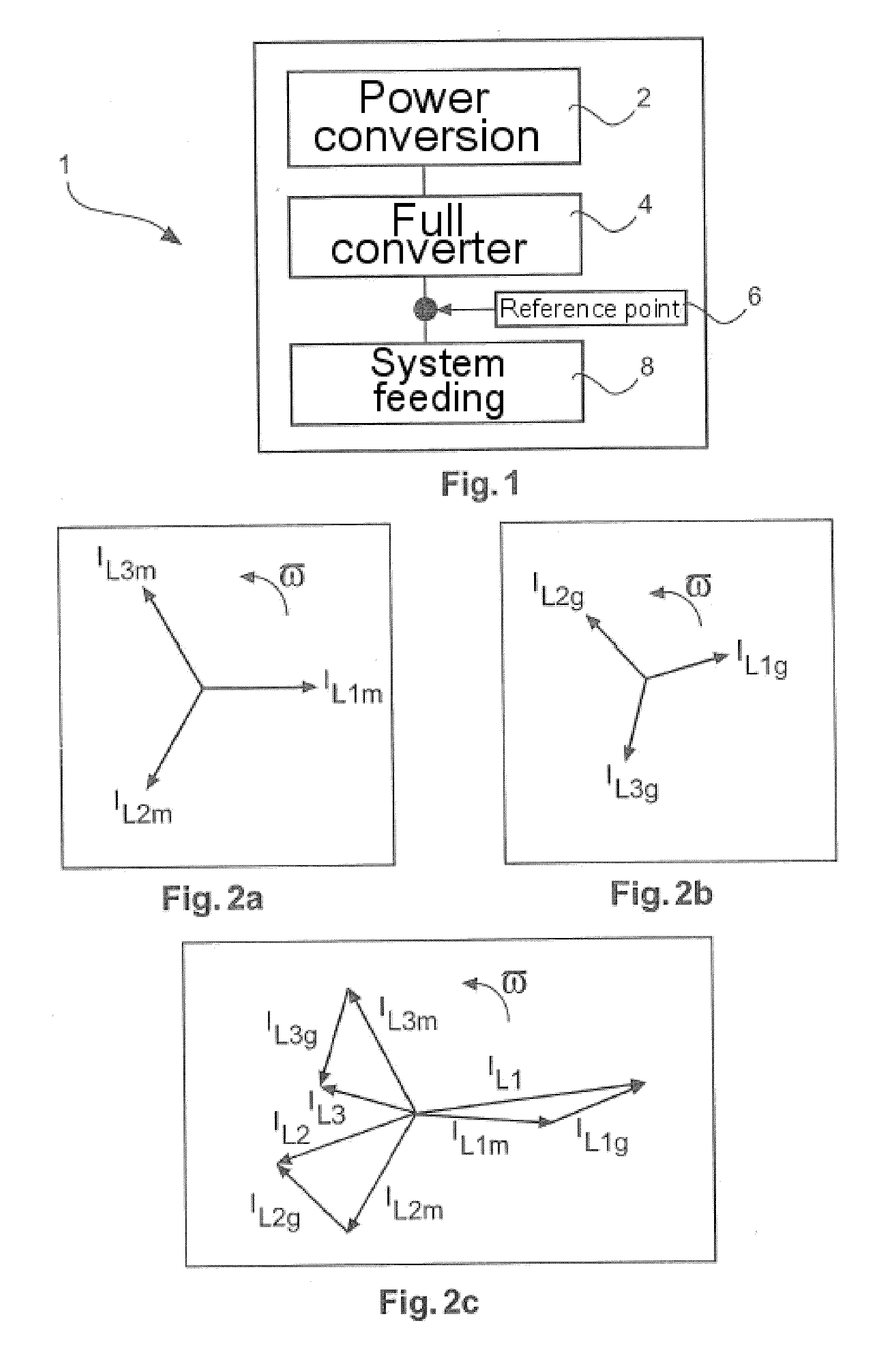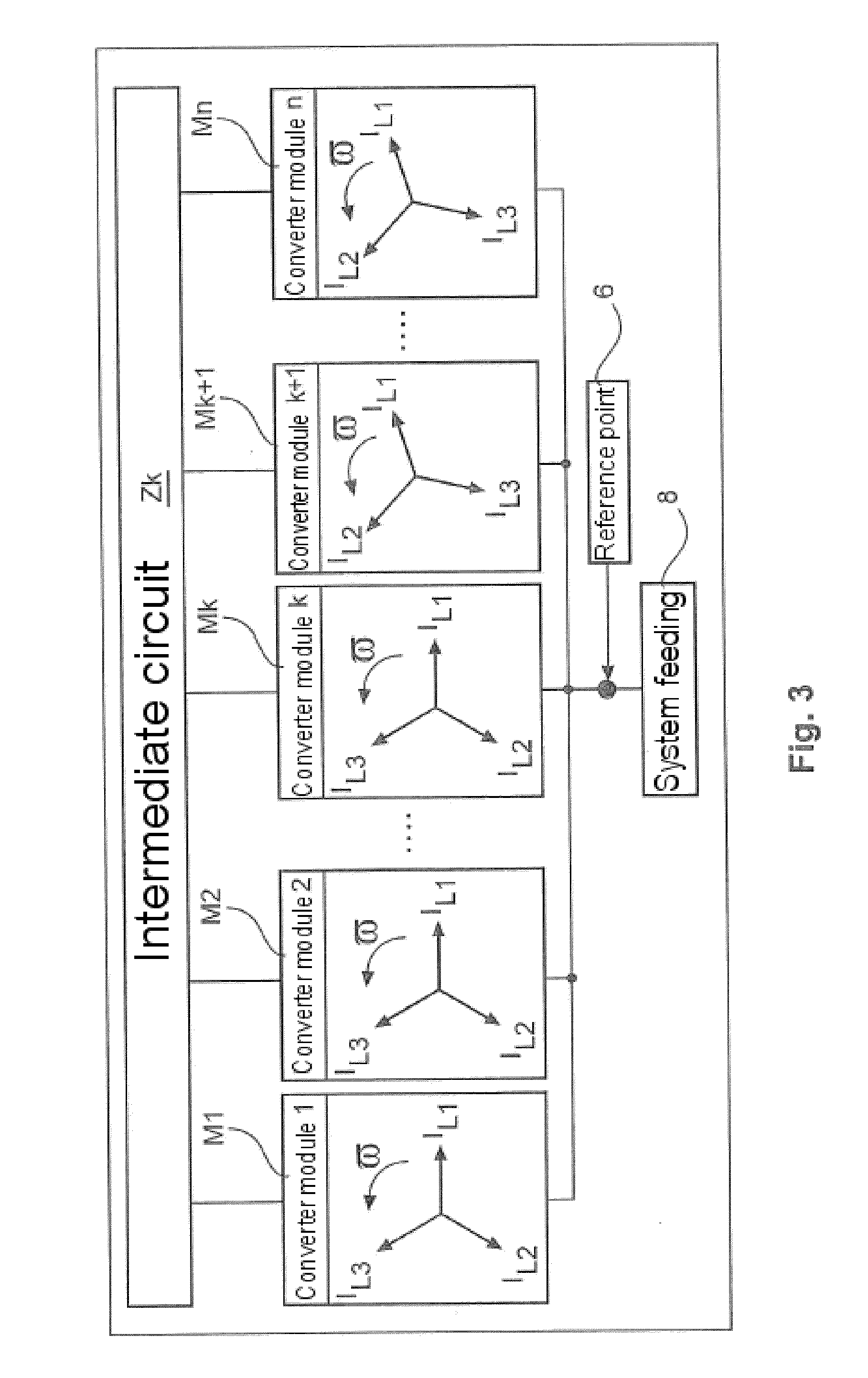Method for feeding electrical power into a three-phase ac voltage system
a three-phase ac voltage and system technology, applied in the direction of ac network circuit arrangement, dc-ac conversion without reversal, wind energy generation, etc., can solve the problems of unbalanced loading or possibly unbalanced feeding, damage to sensitive consumers, and unstable stability, etc., to achieve simple and efficient
- Summary
- Abstract
- Description
- Claims
- Application Information
AI Technical Summary
Benefits of technology
Problems solved by technology
Method used
Image
Examples
Embodiment Construction
[0047]The production unit 1 according to the schematic illustration in FIG. 1 comprises a power conversion section 2 which obtains electrical power from another form of energy. For example, a wind power installation can be used to convert energy from the wind into electrical current via an aerodynamic rotor and an electrical generator. A transmission may be provided between the aerodynamic rotor and the electrical generator, which transmission is not important in the present case. A solar cell which can obtain electrical power from solar radiation may be mentioned as a further example for obtaining electrical power from another form of energy.
[0048]In order to prepare this electrical power obtained in the power conversion section 2 for feeding into an electrical AC voltage system, a full converter 4 is provided. The entire electrical power obtained by the power conversion section 2 is fundamentally passed via this full converter 4 in order to be fed into the AC voltage system. In th...
PUM
 Login to View More
Login to View More Abstract
Description
Claims
Application Information
 Login to View More
Login to View More - R&D
- Intellectual Property
- Life Sciences
- Materials
- Tech Scout
- Unparalleled Data Quality
- Higher Quality Content
- 60% Fewer Hallucinations
Browse by: Latest US Patents, China's latest patents, Technical Efficacy Thesaurus, Application Domain, Technology Topic, Popular Technical Reports.
© 2025 PatSnap. All rights reserved.Legal|Privacy policy|Modern Slavery Act Transparency Statement|Sitemap|About US| Contact US: help@patsnap.com



